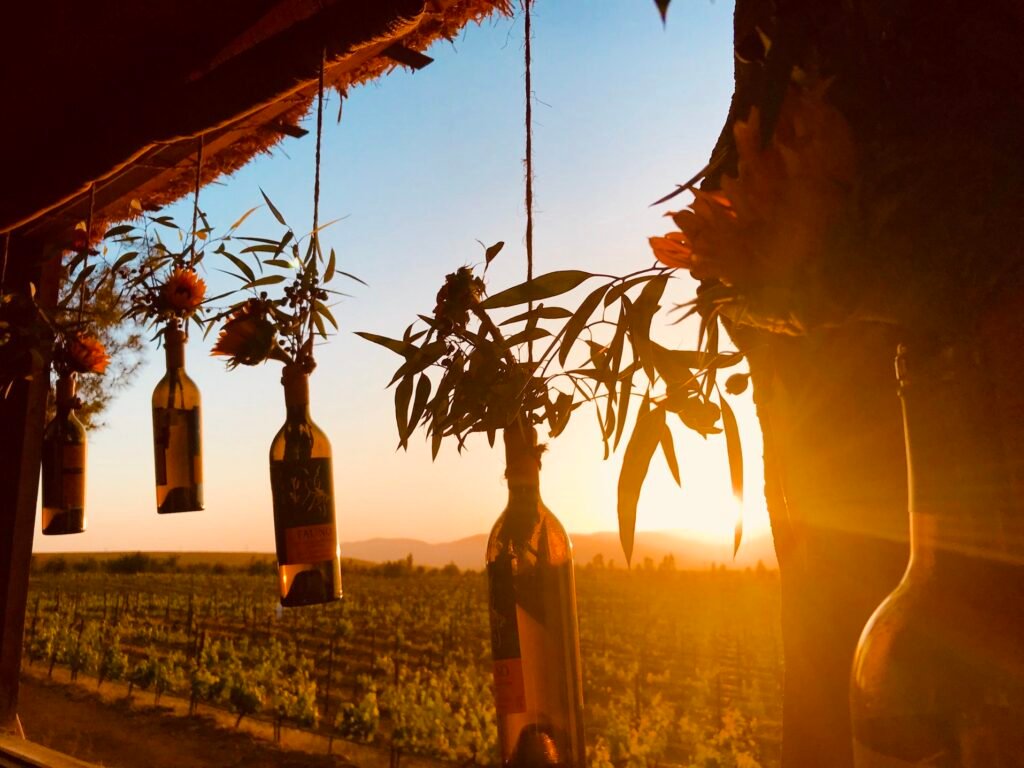BREAKING NEWS! Just as we were going to press, on September 28th, the wine growers filed a legal appeal before a District judge, to force the Municipal Government of Ensenada to apply the regulations to protect the conservation areas from further illegal land sales. Civil requests of the Municipal have been ignored for over two years. This action is one of two hopeful signs of a healthy direction for the Valle de Guadalupe’s future. That appeal has just been granted by a State judge.
In part 1 of this story it was clearly stated the rapid growth in just the last five years in overdevelopment and illegal land sales is at critical level. It was shown that the Guadalupe Valley is at a crossroads and decisions need to be made about the course correction. Agriculture, development, community and water are all at risk and need protection. Rapid-growth tourism is a threat to grape production, posing issues for landscape and water usage.
In the midst of this critical period for the Guadalupe Valley a historic event is taking place. Baja California has elected their very first women governor on June 5, 2021. Marina de Pilar Avila will be sworn in for a six year term November 1st. She is young, beautiful and very smart as well as politically savvy from her years in Congress and holds a law degree. The first thing she did was call winemakers from the valley to accompany her to Napa, California wine region. The Governor-elect was already clear about one of her priorities to shepherd the wine industry into 2022. She told the press she wanted to be known as the Wine Governor. Being a good politician she knows it is important to align herself with the popular perception of what Baja California has to offer for sustainable tourism. While there are an infinite number of treasures in the unique landscape of the entire peninsula with its tallest mountains, unique desert landscapes and the seas surrounding it, it is the wine country which captures most of the press.
In Part 1, Fernando Pérez Castro of Lomita Winery revealed many of the issues that threaten wine production. He was one of the vintners asked to travel with Governor-elect Marina to Napa, California in mid September. Fernando said, “Before she even took office, she wanted to see what a well developed wine region looked like. We were able to talk with Napa vintners, with Napa Green and many associated with the development and sustainability. We were surprised to find our own guidelines for self regulations were very aligned with what Napa has put into place.”
Kicking off her campaign, the Governor-elect intends to keep Ensenada as the Capital of Mexican wine country. In terms of promotion and tourism she knows the importance of this acknowledgement. Fernando points out, “Now what we must do with her is for her to understand what it means in terms of sustainability. It is a tricky thing and an important issue is what is happening, especially considering that the land is not sold in a proper way. If you have the laws to protect the landscape and conservation this will attract a different kind of investor.” The infrastructure is also needed for all the people who call the valley their home.
Fernando shared his vision, “We want to share with the world that we are the Mexican wine country. We have an opportunity to build a sustainable region, but if we continue to be complicit, looking the other way we will repeat history. The top priority on Marina’s agenda is setting new laws for the conservation areas. In doing this she will solve half the problem of the land sales in those areas in the first 90 days as governor.” Fernando paused and looked into the future, “This gives us a big message of hope.”
Fernando’s hard hitting message may be quite unpopular with some of the newer projects in the valley. “Right now we are making the best Mexican wines. We want the best hotels and Mexican restaurants that are on par with our wine. We don’t want cantinas, bars, Mixology, because it does not add to the value of the wine culture, it downgrades it. If you want those things, there are many places in Rosarito, Ensenada or TJ to find that entertainment. Simply put, if you want wine, you come to the wine region.” He stopped for a moment in his vision of the future and states, “When you mix the lack of vision and corruption of the authorities with the predatory instinct of bad developers it brings a huge mess. If the laws are not observed to create something unsustainable, we will have a lawless environment due to our complicity.” He paused and said, “And you can quote me on that!”
Finally Fernando speaks with the passion of the winemaker, “The Governor-elect has positioned people around her who understand what needs to be done to make the Valle de Guadalupe a globally recognized wine region.” Before they adjourned the conference Fernando told Marina, “The future of the wine region is in your hands. We are even willing to sacrifice our production to make the changes.” His closing statement was a wakeup, “We will know in six years for good or for ill that the destiny of the Valle de Guadalupe will be established.”
Voices of Other Visionaries
Natalia Badan of Mogor Winery has lived her entire life in this valley. She has been an activist for conservation for decades. In a 2017 interview I talked with Natalia about what she has seen since 2007. She smiled knowingly as she spoke, “Boom. Suddenly we are in fashion. This is good as it moves into the local economy. On the other hand we have to stay very conscious in order to keep the landscape pristine and beautiful. We have to watch for too much growth too fast that would contaminate what we really care about. If we grow too fast, we can’t go back.” She pointed to the hills, “Here we want slow growth and to keep this small and beautiful.” She punctuated, “Small IS beautiful. We can then be caregivers and invite harmonious groups to enjoy the whole afternoon. Here we watch the sunrise, the sunset, moon and stars and all of this care is part of producing wine.”
MSc Paula Pijoan, Masters in Science and Native Vegetation Consultant
“My vision is for people to understand that protecting the landscape means protecting ourselves. The common practice when people buy land, or prepare it to be sold, is to fence it and then clear it with heavy machinery (“limpiar” in Spanish, which means to clean).
The problem with the practice is that when the land is bulldozed its native vegetation is lost. This brings enormous problems such as:
The soil loses its ability to absorb and retain water from rains
If rains are strong, erosion and landslides happen
The bare soil creates constant dust in the air
Plants harbor animals so clearing them leaves native animals without shelter and food, forcing them to migrate to ever smaller natural spaces.
Loss of landscape, beautiful vistas and the sounds of the nature.
What we propose:
Integrate the native vegetation to the project as native gardens, only clearing the areas where constructions will be built (this saves thousands of dollars!!!)
Incorporate patches or corridors of native vegetation on grape plantations: they help reduce erosion and control pests thanks to the beneficial insects present there.
If native vegetation isn´t present anymore, attempt to restore it
Tom Hack of En’Kanto Winery
As small grape growers dedicated to regenerative farming and minimal intervention winemaking, our hope is that those in a position to set policy and execute enforcement will find both the will and ability to reign in the efforts of individuals who seek to exploit the region for excessive profits that undermine the agricultural base and culture that forms the foundation of Mexican Wine Country. For this agricultural base to survive, from which tourism is a byproduct, the crops, livestock and farming communities must have fair water allocation and priority especially over businesses that demand water consumption only to provide late night entertainment and unrelated activities that tax the fragile ecosystem that we depend on. Wine culture goes hand in hand, and businesses that detract from the agricultural life or the art and passion of winemaking must be strictly limited in wine country as they do not serve to grow the industry or the culture from which they seek to profit without adding value.
Gerard Zanzónico, Vinos Zanzónico
Vinos Zanzónico was given the coveted Robert Parker 100 point award in 2013. Gerard is now consultant for MD Winery and produces his own label, Vinos Zanzónico . He began his passion for winemaking in the early years of Napa Valley. “The Baja wine industry has grown into a world-wide destination. The beginning of this journey was founded on vision, deep passion and a desire to produce world class wines. With this foundation the winemakers and growers have attracted people from other wine regions to add a little spice to the wines of this region. Now, with new growth and a changing mix of world class wines and restaurants other destinations have been developed which confuses the theme. The question we should be asking ourselves is, “Who and What are we?”
“The wine industry of 2021 needs vision and a strong voice to clarify the direction that answers the necessary questions which will guide the future. As I see it, the next generation of visionaries will need to be clear of where they are going based on the vision of being a world class destination. The wines of Baja California are on the edge of worldwide recognition as a renowned region for the highest quality of wines. All of us in the Guadalupe Valley need strong leaders to be the future stewards of this land.”
Editor Note: Martina Dobesh is a freelance writer, journalist and author of two books. New on Amazon, Dust in My Sandals, Tales from a Baja Traveler, take a peek inside and look for our ad to find out what people are saying.



1 Comment